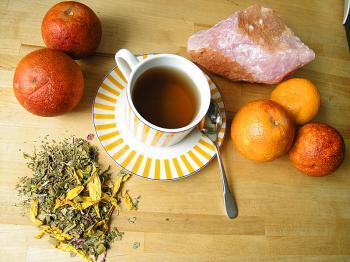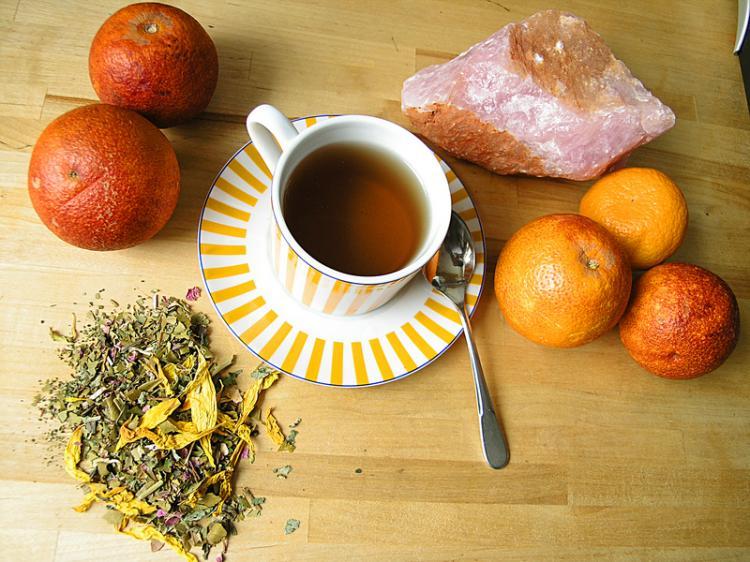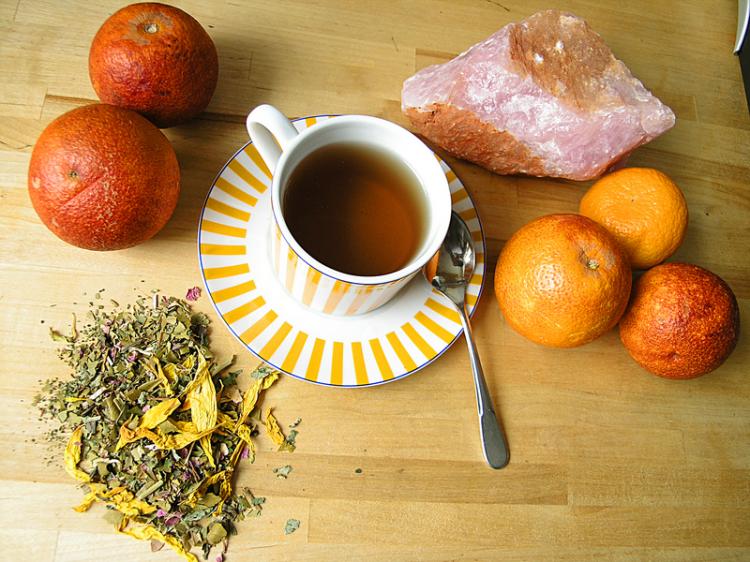Preventing spring fever from turning into spring fatigue
The days are getting longer. Only now are we becoming conscious of the imminent arrival of spring.
Our bodies, well-aware of this seasonal change, transform into a state of activity. In contrast to our more indoor-centered existence during the darker months, we now long to be outdoors, immersed in nature. It’s as if a gentle wind blew away that occasional winter depression, and the sensations of spring fill the air.
Freshly Pressed Juices as Rejuvenators
Unfortunately, our spring awakening has a downside—namely, lethargy, spring fever, and fatigue. Eating light, fresh foods is one way to counteract this state.
Vitamins and raw foods help to rejuvenate our dampened spirits. High-quality fruits and vegetables, such as citrus, can be found in any organic food store. A glass of freshly pressed juice in the morning assures sufficient energy to begin the day.
Energy-Giving Herbal Teas Work Wonders
Several companies produce lines of herbal teas that also work well. Heuschrecke [literally, “cricket”] manufactures a tea that they call “Light for the Day,” a reference to Daoist philosophy.
This preparation reminds one of lemon tea. It contains lemon balm, sunflower blossoms, rose petals, passion fruit leaves, blackberry leaves, stinging nettle, lung wort, and other herbs.
Heuschrecke has another blend, also influenced by Daoism, called “Dao: Serenity in Movement.” It contains sage, mint, thyme, passion fruit leaves, green oat grass, lemon balm, and two other herbs.
Dao: The Way and Change
These terms, “the Way” and “Change,” which originate in Chinese Daoist philosophy, denote aging and wisdom.
Daoist teachings emphasize truth. A Daoist practitioner strives to act and speak authentically, truthfully, correctly, and genuinely. Through disciplined practice, he or she becomes a true human being.Though conventionally occurring around March 19 in the Northern Hemisphere, the onset of spring is not determined by the calendar. Rather, it is determined by phenology, the scientific study of periodic biological phenomena such as flowering, breeding, and migration as these relate to climatic conditions.
The origin of the word “spring” is Greek. It is the season that lures many people out into nature to observe, wander about, and behold the first plants unfolding their blossoms as colors again burst forth.
Middle Europe begins the pre-spring season with the blossoming of snowdrops, but apple blossoms herald the actual arrival of spring. The ever-busy bees, at work with the first rays of the sun, are on the lookout for the first pollinator plant—the pussy willows.
Mood Enhancers Seratonin and Dopamine
Native peoples, who may be deprived of adequate daylight during the winter months when they depend on artificial light, produce more serotonin and dopamine as the days get longer. These hormones, say scientists, are responsible for our lighter moods. They help us enjoy life and can even create a mild euphoria. It would behoove our technologically enhanced populations to move around more in the fresh air during daylight hours to stimulate the production of these two hormones.
Together with walks in nature, our skills with wild herbs in the kitchen can do much to rejuvenate us. Wild garlic grows in the woods like a weed in April and May, spreading its fragrance everywhere, but be careful! Know what you are harvesting because the leaves resemble those of the Lilies of the Valley, which are toxic. Go by the garlic smell!
Wild garlic leaves—in combination with basil—are an excellent ingredient in pesto. Other herbs can be added, but we must be patient until we can harvest the other favorite pesto ingredients in our gardens or in the wilds. As many know, basil can be bought as a potted plant, and with proper care and transplanting, will provide tasty flavors for many months to come.
Click here to read the original article in German





